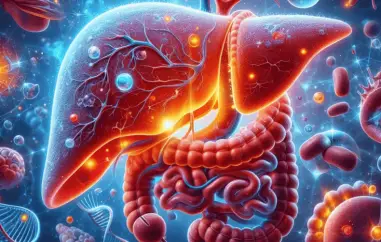Pancreatic Cancer: The Silent Risk in the Upper Abdomen
 Pancreatic cancer, often dubbed the "silent killer," remains one of the most formidable challenges in modern oncology. This malignancy, arising in the tissues of the pancreas, is notorious for its stealthy progression and poor prognosis. Despite advances in medical research and treatment, the survival rates for pancreatic cancer remain dishearteningly low, underscoring the need for increased awareness and early detection.
Pancreatic cancer, often dubbed the "silent killer," remains one of the most formidable challenges in modern oncology. This malignancy, arising in the tissues of the pancreas, is notorious for its stealthy progression and poor prognosis. Despite advances in medical research and treatment, the survival rates for pancreatic cancer remain dishearteningly low, underscoring the need for increased awareness and early detection.
Pancreatic cancer is particularly insidious because it rarely causes symptoms in its early stages. The pancreas, located deep within the abdomen, is a vital organ responsible for producing digestive enzymes and regulating blood sugar. When cancer develops in this area, it can go unnoticed for a considerable time, only manifesting symptoms once it has reached an advanced stage.
Early symptoms, when they do appear, are often vague and easily attributed to less serious conditions. These can include abdominal pain, back pain, weight loss, jaundice (yellowing of the skin and eyes), and digestive problems. Because these symptoms are not unique to pancreatic cancer, they are frequently overlooked, leading to delays in diagnosis.
According to the American Cancer Society, pancreatic cancer accounts for about 3% of all cancers in the United States and about 7% of all cancer deaths. It is the fourth leading cause of cancer-related death in the country. The five-year survival rate for pancreatic cancer remains around 10%, a stark contrast to the higher survival rates seen in many other cancers.
The reasons for these poor outcomes are multifaceted. By the time pancreatic cancer is typically diagnosed, it has often spread to other parts of the body, making it difficult to treat effectively. Additionally, the pancreas's location and its complex anatomy pose significant challenges for surgical intervention.
Risk Factors and Prevention
Understanding the risk factors associated with pancreatic cancer is crucial for early detection and prevention. While the exact cause of pancreatic cancer is still not fully understood, several factors are known to increase the risk of developing the disease:
- Age: The risk of pancreatic cancer increases with age, with most cases occurring in people over 60.
- Smoking: Smokers are two to three times more likely to develop pancreatic cancer than non-smokers.
- Obesity: Being overweight or obese significantly raises the risk of this cancer.
- Diabetes: Long-standing diabetes, particularly type 2 diabetes, has been linked to an increased risk of pancreatic cancer.
- Family History: A family history of pancreatic cancer can increase an individual's risk, suggesting a genetic component.
- Chronic Pancreatitis: Long-term inflammation of the pancreas is associated with an elevated risk.
Lifestyle changes, such as quitting smoking, maintaining a healthy weight, and managing diabetes effectively, can help reduce the risk. Additionally, individuals with a family history of pancreatic cancer should consider genetic counseling and regular check-ups.
While pancreatic cancer remains challenging to diagnose early, advancements in medical research are offering new hope. Innovative imaging techniques, such as endoscopic ultrasound and MRI, are improving the ability to detect tumors at earlier stages. Furthermore, research into blood-based biomarkers is ongoing, with the aim of developing a reliable, non-invasive test for early detection.
In terms of treatment, the standard approach often involves a combination of surgery, chemotherapy, and radiation therapy. The Whipple procedure, a complex surgical operation, is the most common surgery performed when the cancer is confined to the head of the pancreas. However, only a small percentage of patients are eligible for this surgery due to the advanced stage at which the cancer is typically diagnosed.
Recent years have seen promising developments in targeted therapies and immunotherapy. These treatments aim to specifically attack cancer cells or boost the body's immune response against the tumor, respectively. Clinical trials are ongoing, exploring the efficacy of these novel approaches in improving survival rates and quality of life for patients with pancreatic cancer.
Raising awareness about pancreatic cancer is crucial for improving outcomes. Public education campaigns can help people recognize the potential symptoms of pancreatic cancer and seek medical advice sooner. Moreover, advocating for more research funding is essential to drive the development of better diagnostic tools and treatments.
In conclusion, pancreatic cancer remains a silent but deadly threat in the upper abdomen. Despite the grim statistics, advancements in detection and treatment offer hope. By increasing awareness and understanding of this disease, we can improve early detection, provide better care for those affected, and ultimately, save lives.










































